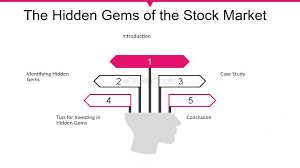Identifying Undervalued Stocks
In the complex world of investing, identifying undervalued stocks stands as a critical strategy for investors aiming to maximize returns while minimizing risks. The concept revolves around the purchase of shares whose market prices do not reflect their intrinsic value. This approach, rooted in the principles of value investing, has been championed by legendary investors such as Benjamin Graham and Warren Buffett. The following exploration delves into the methodologies, metrics, and considerations essential in the identification of undervalued stocks.
Understanding Intrinsic Value
The intrinsic value of a stock represents the true worth of a company based on its fundamentals, rather than its current market price. To estimate this value, various financial models and analyses are employed. These models consider factors such as earnings, revenue, cash flow, and growth potential. A stock is deemed undervalued if its market price is significantly lower than its calculated intrinsic value.
Key Financial Metrics
Several key financial metrics are utilized to identify undervalued stocks:
- Price-to-Earnings (P/E) Ratio: This ratio compares a company’s current share price to its per-share earnings. A lower P/E ratio may indicate that the stock is undervalued relative to its earnings.
- Price-to-Book (P/B) Ratio: The P/B ratio compares a company’s market value to its book value. A P/B ratio below 1 suggests that the stock may be undervalued.
- Dividend Yield: This metric measures the annual dividends paid by a company relative to its share price. A high dividend yield might indicate that a stock is undervalued, particularly if the company’s dividend payout is sustainable.
- Price/Earnings-to-Growth (PEG) Ratio: The PEG ratio takes the P/E ratio and adjusts it for the company’s expected earnings growth rate. A PEG ratio below 1 is often a signal that a stock is undervalued.
Fundamental Analysis
A comprehensive fundamental analysis is crucial in identifying undervalued stocks. This involves a deep dive into a company’s financial statements, including its income statement, balance sheet, and cash flow statement. Key areas of focus include:
- Revenue and Earnings Growth: Consistent revenue and earnings growth can indicate a strong and potentially undervalued company.
- Profit Margins: High and stable profit margins suggest efficient management and a competitive advantage.
- Debt Levels: Lower debt levels relative to equity imply financial stability and lower risk.
Qualitative Factors
Beyond quantitative analysis, qualitative factors play a significant role in evaluating a company’s potential. These factors include:
- Management Quality: Competent and visionary leadership can drive a company’s success.
- Competitive Advantage: Companies with a strong market position, brand recognition, or unique products are often better positioned for long-term growth.
- Industry Trends: Understanding the broader industry context helps in assessing a company’s future prospects.
Market Sentiment and Behavioral Aspects
Market sentiment and investor behavior also impact stock prices. Undervalued stocks often arise from market overreactions to short-term events or negative news. Behavioral finance studies the psychological factors influencing investor decisions, which can lead to irrational selling and the creation of buying opportunities for astute investors.
The Margin of Safety
The margin of safety principle, introduced by Benjamin Graham, is a cornerstone of value investing. It entails purchasing stocks at a significant discount to their intrinsic value to cushion against errors in analysis or unforeseen market downturns. This approach reduces the risk of loss and increases the potential for substantial gains.
Case Studies
Historical examples illustrate the successful identification of undervalued stocks. During the 2008 financial crisis, numerous high-quality companies experienced sharp declines in their stock prices. Investors who recognized the intrinsic value of these companies and purchased their shares at depressed prices reaped substantial rewards as the market recovered.
Tools and Resources
Various tools and resources assist investors in identifying undervalued stocks:
- Stock Screeners: Online stock screeners filter stocks based on specific criteria such as P/E ratio, P/B ratio, and dividend yield.
- Financial News and Reports: Keeping abreast of financial news, analyst reports, and company filings provides valuable insights.
- Investment Forums and Communities: Engaging with other investors through forums and communities can uncover new investment ideas and perspectives.
Risks and Considerations
While the potential rewards of investing in undervalued stocks are significant, several risks and considerations must be acknowledged:
- Value Traps: Not all low-priced stocks are undervalued. Some may be cheap for valid reasons, such as declining businesses or poor management.
- Market Timing: Timing the market is challenging, and undervalued stocks may take time to realize their intrinsic value.
- Economic Factors: Macroeconomic conditions and geopolitical events can impact stock prices and the broader market.
How to find hidden gems in the stock market

Finding hidden gems in the stock market is a pursuit that has fascinated investors for decades. While the process can be intricate and challenging, it can also yield substantial rewards when executed effectively. The discovery of these undervalued or overlooked stocks requires a combination of diligent research, strategic thinking, and a keen eye for detail. Below, a comprehensive guide to uncovering these hidden treasures is outlined.
Understanding Hidden Gems
A hidden gem in the stock market is a stock that is undervalued or not widely recognized by the broader investment community. These stocks often belong to smaller companies that have not yet attracted the attention of major investors or analysts. Identifying such stocks involves recognizing their potential for growth and profitability before the rest of the market catches on.
Steps to Identify Hidden Gems
- Conduct Thorough Research
- Extensive research must be conducted to identify hidden gems. Start by exploring industries and sectors that are not currently in the spotlight but have strong growth potential. Niche markets and emerging industries often harbor hidden opportunities.
- Analyze Financial Statements
- A deep dive into a company’s financial statements is essential. Key metrics such as revenue growth, profit margins, and debt levels should be analyzed. Companies with strong financial health and consistent growth patterns, despite being undervalued, are prime candidates.
- Evaluate Management Teams
- The quality of a company’s management team can significantly influence its success. Research the backgrounds and track records of the executive team. Effective and experienced leaders can drive a company’s growth and navigate challenges adeptly.
- Assess Competitive Advantage
- Determine whether the company possesses a sustainable competitive advantage. This could be in the form of unique technology, a strong brand, patents, or cost advantages. Companies with a distinct edge over competitors are more likely to succeed in the long run.
- Look for Insider Buying
- Insider buying can be a positive signal. When company executives or insiders are purchasing shares, it often indicates their confidence in the company’s future prospects. Monitoring insider transactions can provide valuable insights.
- Consider Market Trends
- Understanding broader market trends and economic indicators is crucial. Companies positioned to benefit from emerging trends or shifts in consumer behavior should be identified. For instance, a rise in environmental consciousness might favor companies in the renewable energy sector.
Utilizing Tools and Resources
Several tools and resources can aid in the search for hidden gems:
- Stock Screeners: Advanced stock screeners can filter stocks based on specific criteria such as market capitalization, P/E ratio, and revenue growth. Customizable filters allow for a more targeted search.
- Financial News Platforms: Staying updated with financial news and analyst reports can provide insights into potential opportunities. Subscribing to industry-specific publications can also be beneficial.
- Investor Forums and Social Media: Engaging in investor forums and monitoring discussions on platforms like Reddit or Twitter can reveal lesser-known stocks gaining traction among retail investors.
Patience and Discipline
Patience and discipline are essential virtues in the search for hidden gems. The market may not recognize the value of these stocks immediately, and price appreciation can take time. Investors must be prepared to hold onto their investments through periods of volatility.
Case Studies and Historical Examples
Studying historical examples of successful hidden gem investments can provide valuable lessons. Companies like Amazon, Apple, and Netflix were once considered under-the-radar stocks before achieving monumental success. Analyzing their early-stage characteristics can offer insights into identifying similar opportunities today.
Risk Management
While the potential rewards of finding hidden gems are substantial, it is important to manage risks effectively. Diversification should be maintained to mitigate the impact of potential losses. Investing only a portion of the portfolio in high-risk, high-reward stocks is advisable.
Conclusion
In conclusion, the pursuit of hidden gems in the stock market requires a blend of meticulous research, strategic analysis, and patience. By leveraging financial tools, staying informed, and maintaining a disciplined approach, investors can uncover undervalued stocks with significant growth potential. While the journey is fraught with challenges, the rewards can be substantial for those who persevere and make informed decisions.
Conclusion
The identification of undervalued stocks requires a blend of quantitative analysis, qualitative assessment, and an understanding of market psychology. By focusing on intrinsic value and employing a disciplined approach, investors can uncover opportunities that the broader market overlooks. While challenges and risks are inherent, the potential for substantial returns makes the pursuit of undervalued stocks a compelling strategy in the realm of investing. The principles of value investing, time-tested and proven by notable investors, continue to offer a roadmap for those seeking to navigate the complexities of the stock market with a discerning eye.










